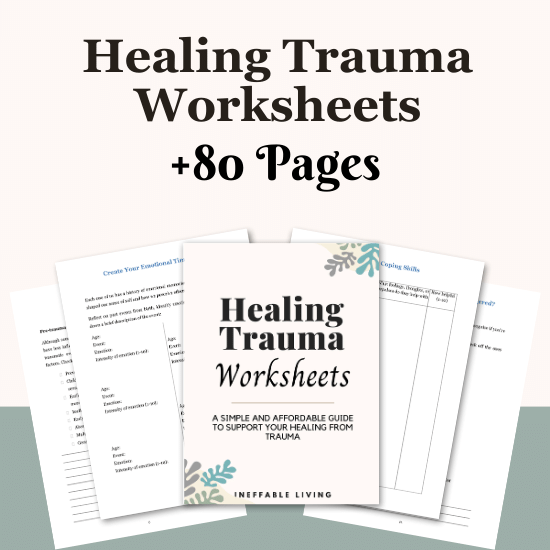Acute Stress Syndrome (ASS), also known as Acute Stress Disorder (ASD), is a psychological condition that can develop after a person experiences a traumatic event.
It is characterized by severe anxiety, dissociation, and other distressing symptoms that occur within the first month following the trauma.
Understanding this condition is crucial for recognizing its signs, providing timely intervention, and supporting those affected on their path to recovery.
What is Acute Stress Syndrome?
Acute Stress Syndrome is the body’s immediate response to a traumatic event.
Unlike Post-Traumatic Stress Disorder (PTSD), which develops over time, ASS manifests shortly after the traumatic incident.
The symptoms can be overwhelming, but early recognition and treatment can significantly improve outcomes.
Related: What to Do When Someone with PTSD Pushes You Away?
Causes of Acute Stress Syndrome
Acute Stress Syndrome can result from various traumatic events, including:
- Natural disasters (earthquakes, floods, hurricanes)
- Serious accidents (car crashes, industrial accidents)
- Physical assault or abuse
- Witnessing violence or death
- Sudden loss of a loved one
- Any life-threatening event
The severity of the event, individual vulnerability, and available social support can all influence the development and intensity of Acute Stress Syndrome.
Related: 10 Tips On Healing From Trauma While In A Relationship
Symptoms of Acute Stress Syndrome
The symptoms of Acute Stress Syndrome can be grouped into several categories, including intrusive thoughts, avoidance, dissociation, and heightened arousal. Here’s a closer look at each category:
1. Intrusive Thoughts:
- Recurrent, involuntary, and distressing memories of the traumatic event
- Flashbacks or feeling as if the event is happening again
- Nightmares related to the trauma
2. Avoidance:
- Efforts to avoid thoughts, feelings, or conversations associated with the trauma
- Avoidance of places, activities, or people that trigger memories of the event
3. Dissociation:
- Feeling detached from oneself or one’s surroundings (derealization)
- Inability to remember important aspects of the traumatic event (dissociative amnesia)
- A sense of emotional numbness or lack of responsiveness
4. Heightened Arousal:
- Difficulty sleeping
- Irritability or angry outbursts
- Hypervigilance (being overly alert to potential danger)
- Difficulty concentrating
- Exaggerated startle response
Related: 7 Trauma Release Exercises To Support Your Recovery After Trauma
How to Manage Acute Stress Syndrome?
1. Seek Immediate Professional Help
One of the first steps in managing ASD is to seek professional help.
This can involve visiting a mental health professional such as a psychologist, psychiatrist, or counselor who specializes in trauma and anxiety disorders.
Early intervention is crucial as it can help mitigate the severity of symptoms and provide a structured framework for recovery.
Mental health professionals can conduct a thorough assessment, provide a diagnosis, and develop a personalized treatment plan tailored to the individual’s needs.
2. Cognitive Behavioral Therapy (CBT)
Cognitive Behavioral Therapy (CBT) is one of the most effective treatments for ASD.
CBT focuses on identifying and challenging distorted thought patterns and beliefs that contribute to stress and anxiety.
It also involves developing healthier thinking patterns and coping mechanisms. Key components of CBT for ASD include:
– Exposure Therapy: This involves gradually confronting trauma-related memories, thoughts, and situations in a controlled and safe environment to reduce fear and avoidance behaviors.
– Cognitive Restructuring: This technique helps individuals identify and alter negative and irrational thoughts related to the traumatic event.
– Relaxation Techniques: Learning relaxation strategies, such as deep breathing, progressive muscle relaxation, and mindfulness meditation, can help manage physiological symptoms of stress and anxiety.
Related: What Is Functional Freeze? Top 10 Signs
3. Eye Movement Desensitization and Reprocessing (EMDR)
EMDR is another therapeutic approach that has proven effective in treating trauma-related disorders like ASD.
This therapy involves the patient recalling distressing events while the therapist directs their eye movements.
The process helps in reprocessing traumatic memories, reducing their emotional impact, and promoting adaptive thinking.
EMDR can be particularly beneficial for individuals who struggle with intrusive memories and flashbacks.
Related: What Are the 8 Stages of EMDR?
4. Building a Support System
Having a strong support system is vital for individuals recovering from ASD.
Support can come from various sources, including family, friends, support groups, and community resources.
Engaging with others who have experienced similar trauma can provide validation and a sense of belonging.
Support groups, both in-person and online, offer a safe space to share experiences, receive encouragement, and learn from others’ coping strategies.
5. Self-Care and Lifestyle Adjustments
Self-care is a critical component of managing ASD. Prioritizing self-care helps individuals build resilience and improve their overall well-being. Key aspects of self-care include:
– Physical Health: Regular exercise, a balanced diet, and adequate sleep are foundational to physical and mental health. Exercise, in particular, can help reduce stress and improve mood by releasing endorphins.
– Mindfulness and Relaxation: Practicing mindfulness and relaxation techniques can help manage symptoms of anxiety and hyperarousal. Techniques such as meditation, yoga, and tai chi promote relaxation and enhance emotional regulation.
– Healthy Routines: Establishing and maintaining a regular daily routine can provide a sense of stability and predictability, which is often disrupted by traumatic experiences.
Related: Top 45 Self Care Day Ideas at Home To Kickstart Your Self Care Ritual
6. Education and Empowerment
Educating oneself about ASD can empower individuals to understand their symptoms and the reasons behind their emotional and psychological responses.
Knowledge about the disorder can reduce feelings of confusion and helplessness, fostering a sense of control over the recovery process.
Resources such as books, articles, and educational workshops on trauma and stress disorders can be valuable.
7. Gradual Exposure to Triggers
Gradual exposure to triggers associated with the traumatic event can help reduce avoidance behaviors and desensitize individuals to these triggers over time.
This process should be conducted under the guidance of a therapist to ensure it is done safely and effectively.
By facing and processing these triggers, individuals can reduce their power over time and reclaim control over their environment and responses.
Related: Top 21 Emotional Writing Prompts To Process Emotions
8. Journaling and Expressive Writing
Journaling and expressive writing can be therapeutic tools for managing ASD.
Writing about traumatic experiences and associated emotions can help individuals process their feelings and gain insight into their thoughts and behaviors.
This practice can also provide a sense of release and clarity, helping to organize and make sense of complex emotions.
9. Long-Term Planning and Goal Setting
Setting long-term goals and developing a plan for the future can provide a sense of purpose and direction.
Establishing achievable goals related to personal growth, career, relationships, and hobbies can motivate individuals and foster a positive outlook.
Celebrating small milestones along the way can reinforce progress and boost self-confidence.

Conclusion
Acute Stress Syndrome is a challenging condition that can significantly impact a person’s life in the immediate aftermath of trauma.
However, with early intervention, proper treatment, and support, individuals can overcome the distressing symptoms and move towards recovery.
Raising awareness about ASS is crucial for ensuring that those affected receive the care and understanding they need during such a vulnerable time.
If you or someone you know is experiencing symptoms of ASS, reach out for professional help—there is a path to healing and hope.



